Jerry Ma
Personality Prediction from Life Stories using Language Models
Jun 24, 2025Abstract:Natural Language Processing (NLP) offers new avenues for personality assessment by leveraging rich, open-ended text, moving beyond traditional questionnaires. In this study, we address the challenge of modeling long narrative interview where each exceeds 2000 tokens so as to predict Five-Factor Model (FFM) personality traits. We propose a two-step approach: first, we extract contextual embeddings using sliding-window fine-tuning of pretrained language models; then, we apply Recurrent Neural Networks (RNNs) with attention mechanisms to integrate long-range dependencies and enhance interpretability. This hybrid method effectively bridges the strengths of pretrained transformers and sequence modeling to handle long-context data. Through ablation studies and comparisons with state-of-the-art long-context models such as LLaMA and Longformer, we demonstrate improvements in prediction accuracy, efficiency, and interpretability. Our results highlight the potential of combining language-based features with long-context modeling to advance personality assessment from life narratives.
Recent Developments in AI and USPTO Open Data
Jul 12, 2022Abstract:The USPTO disseminates one of the largest publicly accessible repositories of scientific, technical, and commercial data worldwide. USPTO data has historically seen frequent use in fields such as patent analytics, economics, and prosecution & litigation tools. This article highlights an emerging class of usecases directed to the research, development, and application of artificial intelligence technology. Such usecases contemplate both the delivery of artificial intelligence capabilities for practical IP applications and the enablement of future state-of-the-art artificial intelligence research via USPTO data products. Examples from both within and beyond the USPTO are offered as case studies.
Energy-based models for atomic-resolution protein conformations
Apr 27, 2020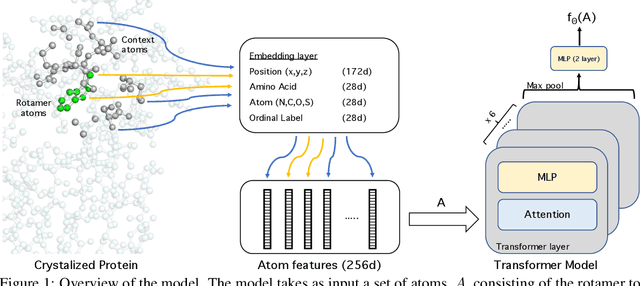

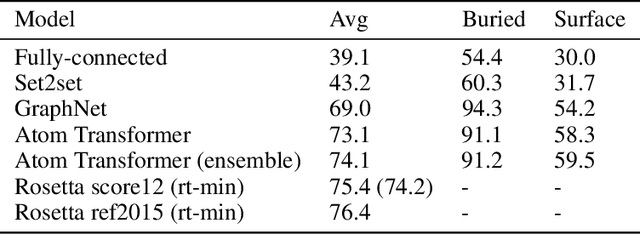
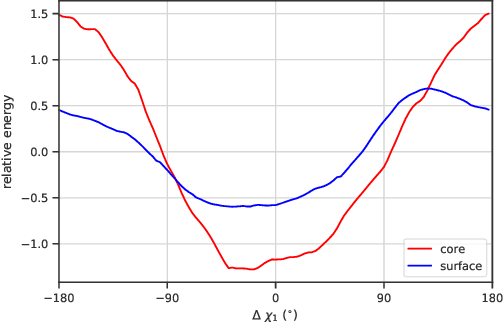
Abstract:We propose an energy-based model (EBM) of protein conformations that operates at atomic scale. The model is trained solely on crystallized protein data. By contrast, existing approaches for scoring conformations use energy functions that incorporate knowledge of physical principles and features that are the complex product of several decades of research and tuning. To evaluate the model, we benchmark on the rotamer recovery task, the problem of predicting the conformation of a side chain from its context within a protein structure, which has been used to evaluate energy functions for protein design. The model achieves performance close to that of the Rosetta energy function, a state-of-the-art method widely used in protein structure prediction and design. An investigation of the model's outputs and hidden representations finds that it captures physicochemical properties relevant to protein energy.
* Accepted to ICLR 2020
On the adequacy of untuned warmup for adaptive optimization
Oct 09, 2019



Abstract:Adaptive optimization algorithms such as Adam (Kingma & Ba, 2014) are widely used in deep learning. The stability of such algorithms is often improved with a warmup schedule for the learning rate. Motivated by the difficulty of choosing and tuning warmup schedules, Liu et al. (2019) propose automatic variance rectification of Adam's adaptive learning rate, claiming that this rectified approach ("RAdam") surpasses the vanilla Adam algorithm and reduces the need for expensive tuning of Adam with warmup. In this work, we point out various shortcomings of this analysis. We then provide an alternative explanation for the necessity of warmup based on the magnitude of the update term, which is of greater relevance to training stability. Finally, we provide some "rule-of-thumb" warmup schedules, and we demonstrate that simple untuned warmup of Adam performs more-or-less identically to RAdam in typical practical settings. We conclude by suggesting that practitioners stick to linear warmup with Adam, with a sensible default being linear warmup over $2 / (1 - \beta_2)$ training iterations.
ELF OpenGo: An Analysis and Open Reimplementation of AlphaZero
Feb 13, 2019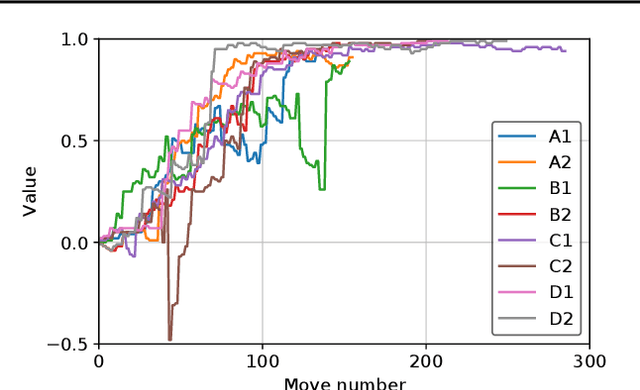

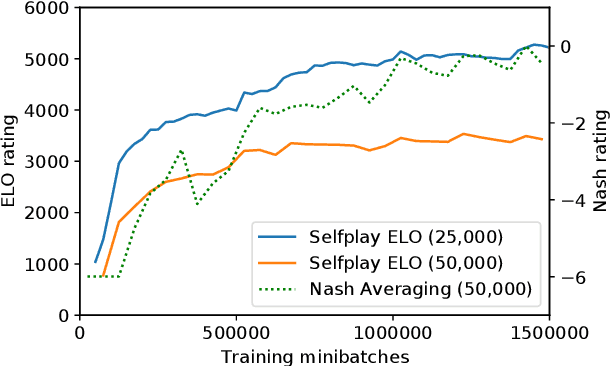

Abstract:The AlphaGo, AlphaGo Zero, and AlphaZero series of algorithms are a remarkable demonstration of deep reinforcement learning's capabilities, achieving superhuman performance in the complex game of Go with progressively increasing autonomy. However, many obstacles remain in the understanding of and usability of these promising approaches by the research community. Toward elucidating unresolved mysteries and facilitating future research, we propose ELF OpenGo, an open-source reimplementation of the AlphaZero algorithm. ELF OpenGo is the first open-source Go AI to convincingly demonstrate superhuman performance with a perfect (20:0) record against global top professionals. We apply ELF OpenGo to conduct extensive ablation studies, and to identify and analyze numerous interesting phenomena in both the model training and in the gameplay inference procedures. Our code, models, selfplay datasets, and auxiliary data are publicly available.
Quasi-hyperbolic momentum and Adam for deep learning
Oct 16, 2018



Abstract:Momentum-based acceleration of stochastic gradient descent (SGD) is widely used in deep learning. We propose the quasi-hyperbolic momentum algorithm (QHM) as an extremely simple alteration of momentum SGD, averaging a plain SGD step with a momentum step. We describe numerous connections to and identities with other algorithms, and we characterize the set of two-state optimization algorithms that QHM can recover. Finally, we propose a QH variant of Adam called QHAdam, and we empirically demonstrate that our algorithms lead to significantly improved training in a variety of settings, including a new state-of-the-art result on WMT16 EN-DE. We hope that these empirical results, combined with the conceptual and practical simplicity of QHM and QHAdam, will spur interest from both practitioners and researchers. PyTorch code is immediately available.
 Add to Chrome
Add to Chrome Add to Firefox
Add to Firefox Add to Edge
Add to Edge